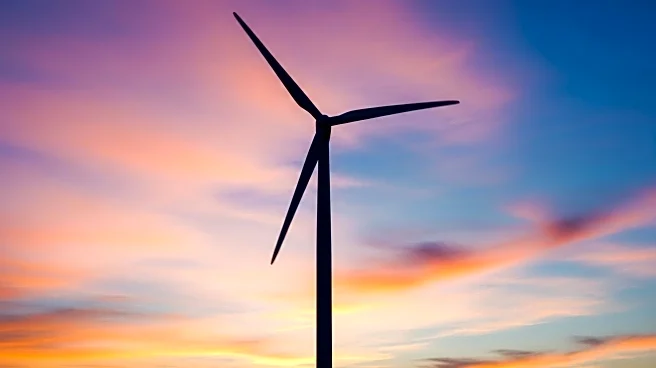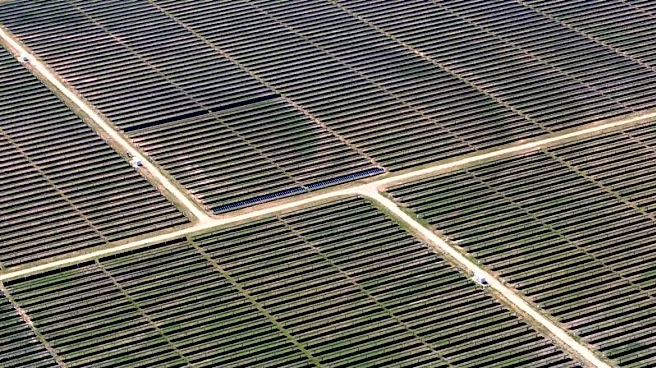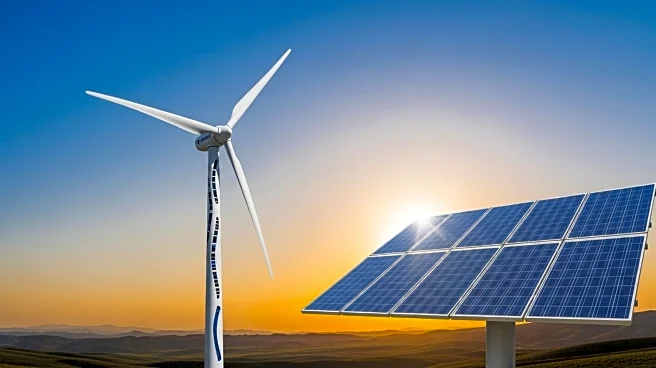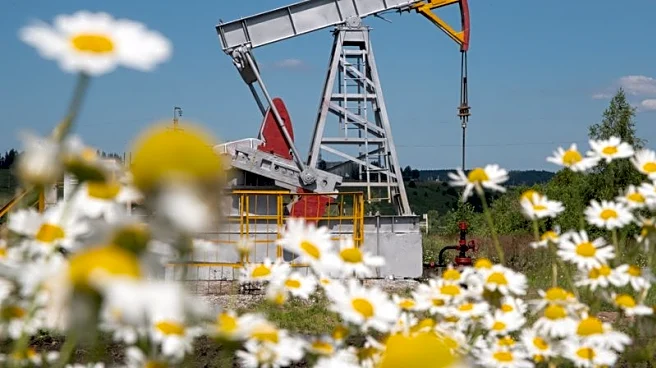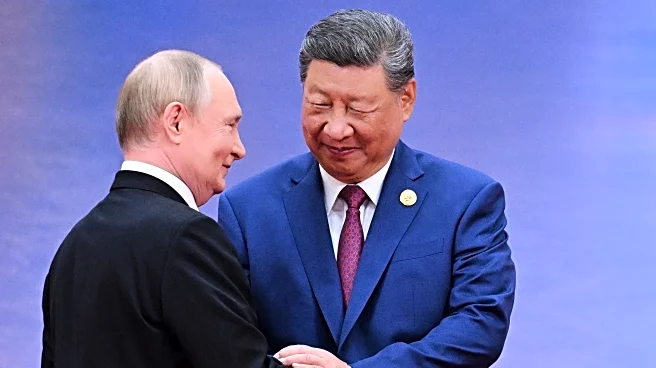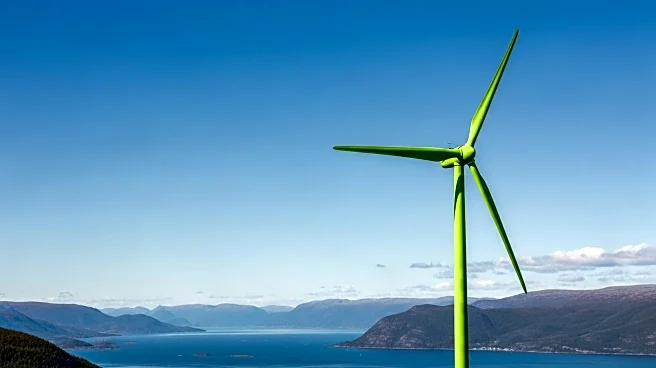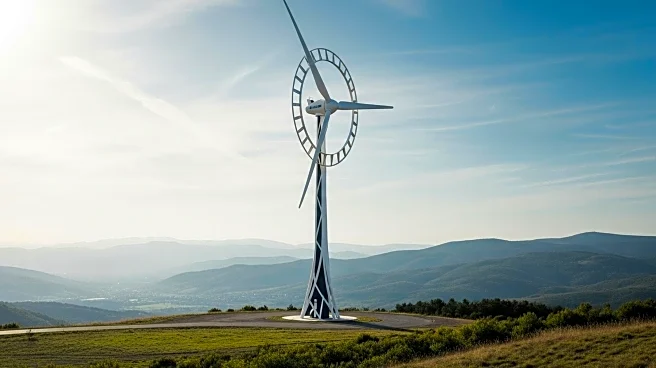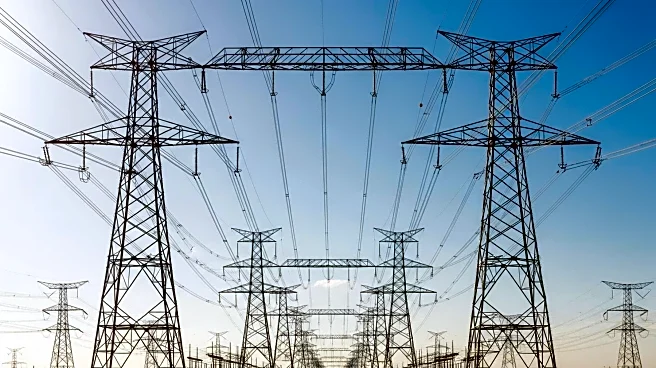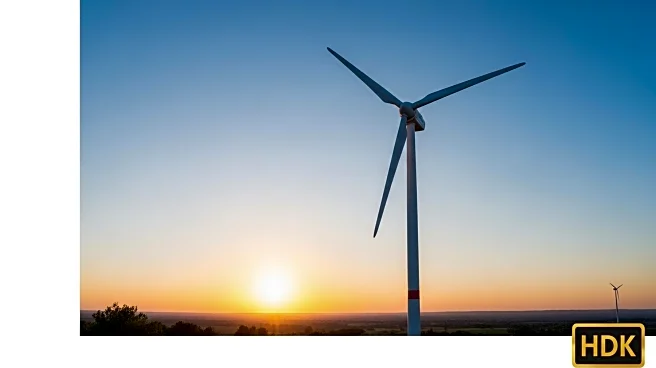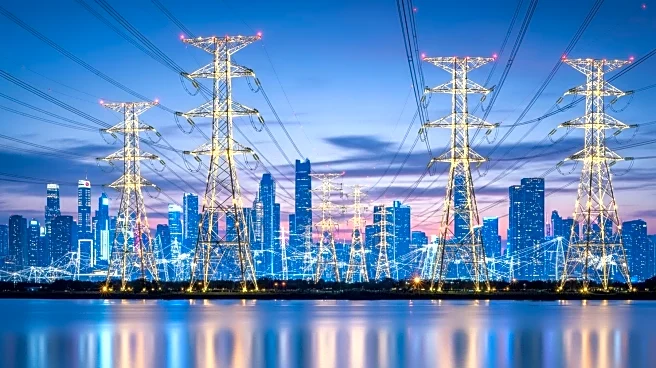What is the story about?
What's Happening?
Wood Mackenzie has projected that the global wind industry will install a record 170 gigawatts (GW) of new capacity by the end of 2025. This growth is largely driven by substantial onshore developments in China, which are expected to reshape the industry landscape. Despite challenges in key markets, including the United States, the global wind sector is set to achieve historic scale over the next decade. The forecast indicates a 13% quarter-on-quarter upgrade, with global wind capacity expected to double from 2024 levels by 2032. However, the offshore wind sector in China faces significant challenges due to sea-use conflicts, which are disrupting project timelines and halting construction.
Why It's Important?
The projected growth in wind capacity highlights the increasing importance of renewable energy in the global energy mix. China's dominance in the sector underscores its strategic investment in clean energy, which could influence global energy policies and market dynamics. The expansion of wind capacity is crucial for meeting international climate goals and reducing reliance on fossil fuels. However, the uncertainty in policy frameworks poses risks to the stability and predictability of the market, potentially affecting investment decisions and the pace of development. Stakeholders in the U.S. and other regions may need to adapt to these changes to remain competitive.
What's Next?
The wind industry will need to navigate evolving policy landscapes to sustain its growth trajectory. Stakeholders may focus on resolving sea-use conflicts in China to ensure the progress of offshore projects. Additionally, the industry might explore opportunities in emerging markets and strengthen project pipelines to mitigate risks associated with policy uncertainty. The development of green hydrogen markets could also play a role in supporting wind energy expansion, although current slowdowns present challenges. Monitoring these developments will be crucial for industry players and policymakers aiming to capitalize on the projected growth.
Beyond the Headlines
The concentration of wind capacity growth in China may lead to geopolitical shifts in energy leadership, influencing global trade and diplomatic relations. The challenges faced by the offshore wind sector highlight the need for sustainable and conflict-free resource management. As the industry adapts to new geographies of growth, ethical considerations regarding land use and environmental impact will become increasingly important. Long-term shifts in energy policy could redefine the balance between traditional and renewable energy sources, impacting economic and social structures worldwide.
AI Generated Content
Do you find this article useful?
